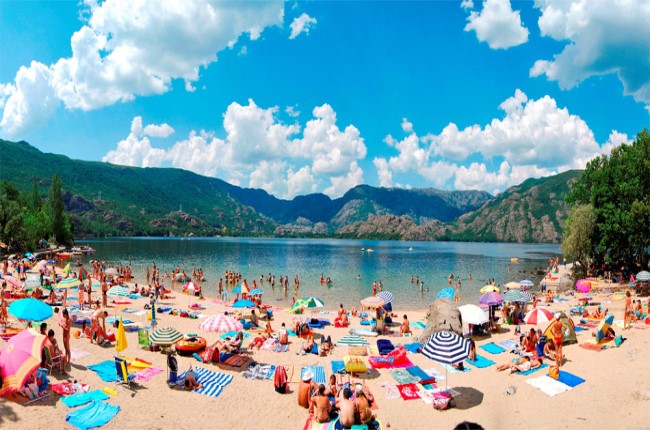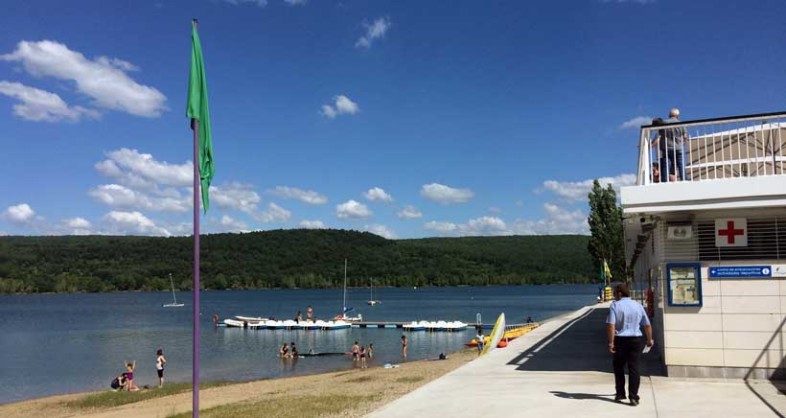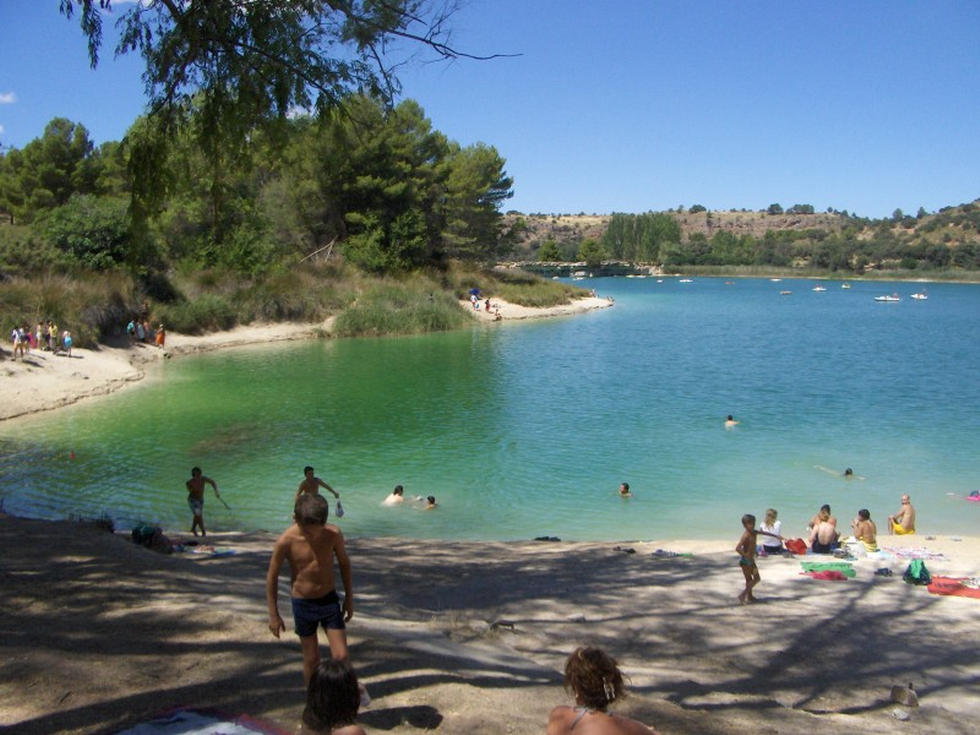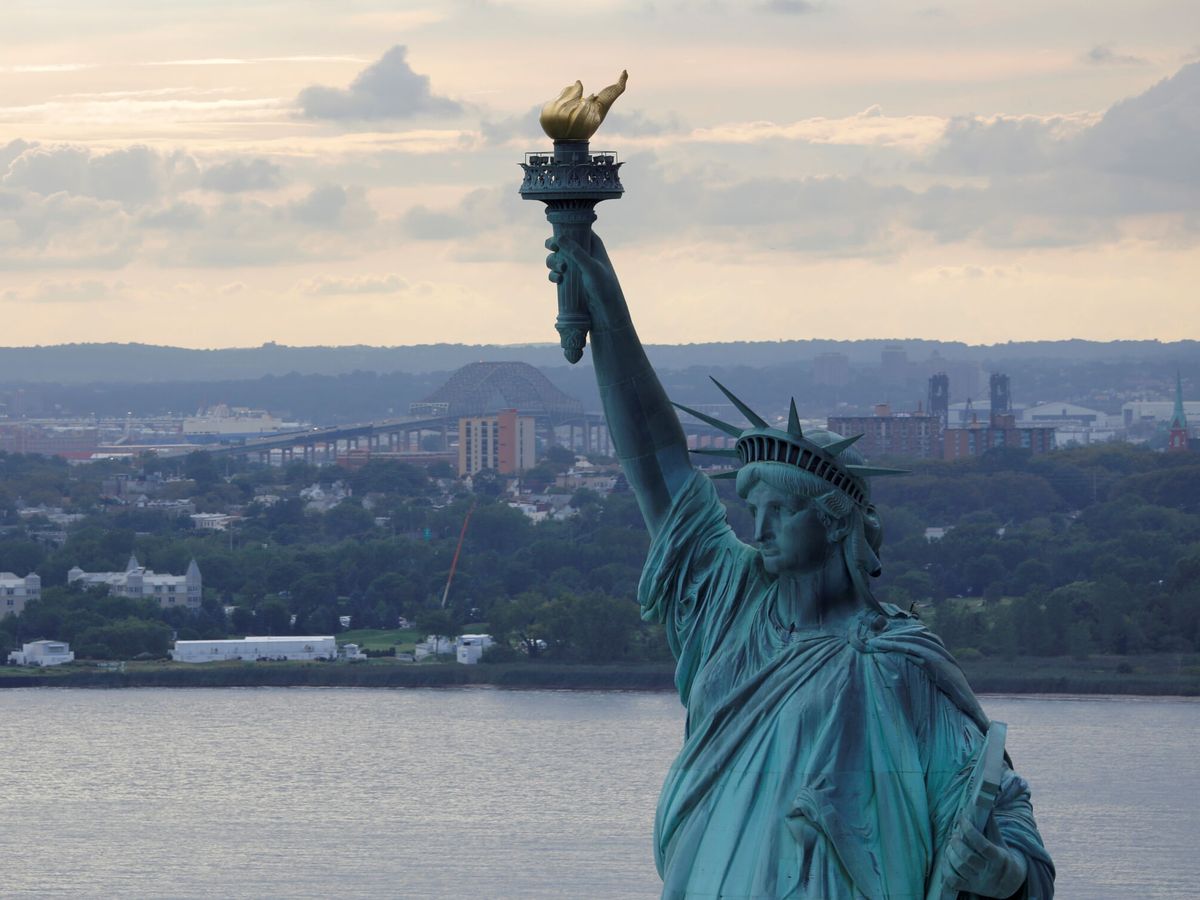These are the best spots to cool off this summer in Inland Spain
Tuesday, June 21, 2022
With these high temperatures that we are experiencing in recent days, a quick dip is the best solution. But Inland Spain, lacking coasts, has its charms, which are boundless, but it also has idyllic and essential places to soak oneself and cope with this “inhumane” heat in the best possible way.
I invite you to get to discover those places, sometimes unknown, that deserve to be visited to freshen up, some of them located in strategic natural settings. These are lakes, lagoons, river beaches, natural pools or pools that can be found in Castilla y León, Castilla-La Mancha, Aragón, Extremadura, La Rioja, or Navarra. They are of Cours many many more, but this is a good start...
Sanabria and river beaches in Zamora
Our journey starts in Castilla y León, specifically in the province of Zamora, which has a wide range of places to swim, with the Sanabria Lake. But also in Puebla de Sanabria we find the area of "La Chopera" or in Trefacio "La Corneira".

Two river beaches sheltered by reservoirs are found in Cional and Villadeciervos, and the Ricobayo river beach in Zamora is also worth mentioning, or in the capital itself, the “Los Pelambres” recreational area, on the banks of the Duero River.
More in Castile and Leon
If we go through the provinces and start with Ávila, the Charco del Risquillo natural pool deserves to be included, in the heart of the Tiétar Valley, without forgetting the Navaluenga Natural Pools. In León, we are also left with another natural pool, that of Vega de Espinaredasta, one of the largest in the Bierzo region. But we cannot forget the beaches of Balboa or La Ribera de Folgoso or other natural pools in Cacabelos, Llamas de la Ribera or Villafranca del Bierzo. While in Palencia, the Ruesga reservoir is well worth a good swim. On to Segovia, it is worth visiting the Fuente de la Salud in Sepúlveda while in Soria the Pita Beach is the bathing area par excellence in the province.

The Rioja
In the middle of the González Lacasa reservoir, the Club Náutico El Rasillo awaits us, the only place authorized to bathe in Riojan lands. But there are also natural pools, such as the Iregua Park, where you can enjoy the crystal clear and cold waters of the river.

Navarre
River pool of Uztárroz
There are also no beaches in this Autonomous Community, but there are several river areas where you can cool off. One of them is the Urederra River, as it passes through Zudaire and Artavia. Some small pools with cold water. Another point of interest is found in the Alloz reservoir, a privileged place for both fishing and water sports. In Beriáin we come across the Morea raft. And one last recommendation: the Uztárroz river pool, with fresh waters that do not exceed 17 degrees in temperature.

Castilla la Mancha
The Castilian La Mancha community has more than thirty authorized bathing areas, exactly 35. There are several options for bathing here, from the Alarcón Reservoir, passing through the Bolarque Lake in Almonacid de Zorita in Guadalajara, which is joined by the La Toba reservoir (Cuenca) or the Entrepeñas reservoir. But the most famous is found in the Lagunas de Ruidera, especially the pool in Laguna Colgada better known as "Plaza Toros", without forgetting the natural pool of Las Chorreras.


Aragon
The natural spaces in the Aragonese community are varied, starting with the Pyrenees of Huesca, which gives the visitor unexpected dreamlike landscapes. And if they also allow a refreshing dip, what more could you ask for? We begin our journey through Huesca, through one of the most popular areas, Salto de Bierge, located in the Sierra y Cañones de Guara Natural Park. Another option is the Búbal Reservoir, over which a zip line, not suitable for the faint of heart, flies over.

In Zaragoza we find two well pools in Los Chorros in Belchite and El Pígalo in Luesa. Another natural pool is that of Peña del Cuervo, near the capital. And in Teruel, there are three ideal places, the Bergantes river pool, the Valbona reservoir and the Pesquera pools in Beceite.
Extremadura
The Community of Extremadura does not have a coast either, but it does have idyllic places to get lost and river beaches and pools of ten. One of them is found in the Valle del Jerte, in the so-called Garganta de Los Infiernos, with numerous pools. Other nearby places are the Natural Pool of Carreciá in Acebo or those of La Codosera. If we want a beach, Entrerríos between the Zújar and Guadiana rivers has a beach to spend a great day with the family.

 2
Like
Published at 4:48 PM Comments (1)
2
Like
Published at 4:48 PM Comments (1)
A library in Spain has hidden a replica of the Statue of Liberty for 127 years
Tuesday, June 14, 2022

No monument can compete in celebrity with the Statue of Liberty in New York. Perhaps there are greater icons of freedom, justice and democracy, but there is no other work that has deserved so many replicas. There are more than 300 throughout the world and some are largely unknown despite their history behind them.
This is the case of the Statue of Liberty that is hidden in the Arús public library, on Paseo San Juan in Barcelona, where a magnificent replica has remained in the same place since 1895. A total of 127 years without moving a single centimetre and welcoming a magical library, the first to be opened in the Catalan capital.

So overwhelming was the impact of the Statue of Liberty in New York - a gift from France to the United States on the occasion of the centenary of its declaration of independence in 1774 - that replicas began to proliferate in countless countries.
They are in Soltau (Germany), Tokyo (Japan), Arraba (Israel), Visnes (Norway), Taipei (Taiwan), Bahria (Pakistan)... and, of course, Paris.
In the capital of France is, in fact, the 11-meter-high bronze model that Frederic Auguste Batholdi produced to scale to later give rise to the monumental 93-meter icon of the port of New York.

The Statue of Liberty (whose original name is Lady Liberty Lightning) was hugely inspiring around the world. It was inaugurated late in 1886 since it did not arrive in time for the centenary of the US declaration of independence in 1884. And the aftershocks did not stop.
In Barcelona, the sculptor Manuel Fuxà was commissioned to make a scale copy for the inauguration of the Arús library, a reference point for Freemasons in Catalonia. In reality, Fuxà was in charge of making the plate and it was the Italian master bronze artist Odoardo Luis Razzauti who completed the two-meter-high work.
The small-scale copy of the famous original can be seen in this Barcelona library up some elegant marble stairs. Discounting the size, the most conspicuous difference is the inscription in the book that Lady Liberty holds her left arm; instead of the date that the United States proclaimed its independence (JULY IV MDCCLXXVI), in the copy of Fuixà, you can read “Anima Libertas” (the Freedom of the Soul).
 1
Like
Published at 8:39 PM Comments (0)
1
Like
Published at 8:39 PM Comments (0)
Discovering Palma de Mallorca
Friday, June 10, 2022

The city of Palma was once coveted by Romans, Moors and Berber pirates. It was King Jaume I who put an end to the Moorish reign in the Mediterranean island (13th century), and who built the most important constructions in Palma. The old quarter of the city stands inside the 18th-century walls which served to repel pirates and corsairs. Visitors will find old churches, palaces and noble mansions with charming courtyards (there are over 40 dotted around the centre of Palma).
The Cathedral of Palma (Sa Seu) is built in a spectacular location on the bay and next to the fishing harbour.  It is an elegant Gothic cathedral, and it is harmoniously built, despite being so large. It was commissioned by King Jaume I, to be built on the site of the old Mayurqa Mosque. The cathedral has very high vaults; although what surprises the most is an impressive rose window and the peculiar wrought iron baldaquin, by the Catalan architect Antonio Gaudí. Opposite Sa Seu is the Almudaina Palace. The former Moorish palace and residence of the monarchs of Majorca is currently used as a museum. Its appearance as a Moorish fortress contrasts with the rich ornamentation of the flamboyant Gothic Chapel of Santa Ana that can be found inside. Situated near the Paseo Sagrera is Sa Llotja. This old fish market, which is used for exhibitions today, is one of the best examples of civil Gothic architecture in Spain. Its Solomonic columns and cross vaults are quite unusual for a secular construction. Together with the Lonja, we find the Consolat (Consulate) de Mar where the regional government has its headquarters, under Renaissance arches. It is an elegant Gothic cathedral, and it is harmoniously built, despite being so large. It was commissioned by King Jaume I, to be built on the site of the old Mayurqa Mosque. The cathedral has very high vaults; although what surprises the most is an impressive rose window and the peculiar wrought iron baldaquin, by the Catalan architect Antonio Gaudí. Opposite Sa Seu is the Almudaina Palace. The former Moorish palace and residence of the monarchs of Majorca is currently used as a museum. Its appearance as a Moorish fortress contrasts with the rich ornamentation of the flamboyant Gothic Chapel of Santa Ana that can be found inside. Situated near the Paseo Sagrera is Sa Llotja. This old fish market, which is used for exhibitions today, is one of the best examples of civil Gothic architecture in Spain. Its Solomonic columns and cross vaults are quite unusual for a secular construction. Together with the Lonja, we find the Consolat (Consulate) de Mar where the regional government has its headquarters, under Renaissance arches.

Following Paseo Sagrera Avenue you come to the Es Baluard Museum of Modern Art. Its collection comprises works representative of the most significant international tendencies from the end of the 19th century to the present day. Here you can see works by artists such as Cézanne, Gauguin, Picasso, Tàpies, Kiefer and Barceló, amongst others. Other places well worth a visit include the city's museums, such as the Pilar and Joan Miró Foundation or the March Foundation, whose collections feature works by Miró, Dalí and Juan Gris; they also host major temporary exhibitions.
Continue on through Paseo des Born, which is one of the main arteries of the city, dividing the monumental historic quarter from the fishing, popular districts of Sant Joan and Puig de Sant Pere.
If you take Unió street, from the square Plaza Rei Joan Carles, our next stop would be the Caixa Foundation. The old Grand Hotel, a modernist building, now houses an important cultural centre. Across the street, in El Forn des Teatre Bakery, a peculiar Art Deco building, you can try the delicious "ensaimadas" (a flaky, spiral-shaped bun) and the famous "gató" (almond cake), the best of the whole city.
Further down you will find Plaza Mayor, a square with great modernist influence. From this point on, the great avenues and boulevards that make up the new suburbs of Palma de Majorca unfold: the modern city.
To return to the coast from Plaza Mayor, you can go across the historic quarter and visit Plaza de Cort, the City Hall, the Palace of Vivot and the church of Santa Eulària. The City Hall, also known as "Cort", is a Baroque structure built on top of an old sixteenth-century hospital. On the other hand, the church—the first Christian structure erected in Palma— is a great example of the Catalan Gothic period. Other mansions in the area include the neo-Mudejar Can Corbella, Can Forteza Rey and the Modernist building "El Águila".
Another way is to walk through the old Jewish quarter and the district of Sa Calatrava. Along this journey you will see the Gothic temple of Sant Francesc and, at the heart of "Call" (the Jewish quarter), the Baroque church of Montisió, which sits on top of an old synagogue. Reaching the Promenade, you will see the Arab public baths, a reminder of the rule of the Caliphate of Cordoba over these lands.
In this area you can also visit the Museum of Majorca. This ancient palatial-residence houses a magnificent collection that includes prehistoric, Roman, Muslim and medieval artefacts.
Two kilometres away from Palma's city centre is the Castle of Bellver. The castle is located on top of the wooded hill that dominates the bay. Its unusual, circular floor plan and the delicate arches inside lend it an ornamental, rather that defensive, appearance. The precinct is the current home of the Municipal Museum of History.
 0
Like
Published at 10:00 PM Comments (0)
0
Like
Published at 10:00 PM Comments (0)
Spam post or Abuse? Please let us know
|
|